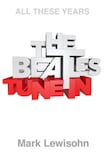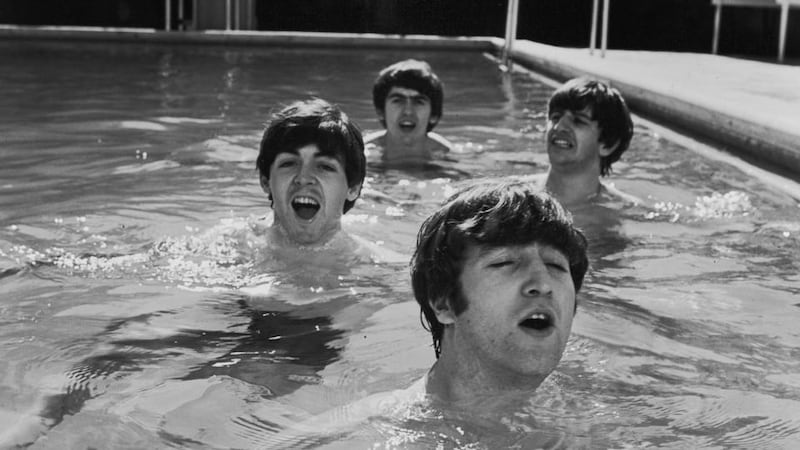
As a Beatles scholar, Mark Lewisohn has no serious rival. In books such as The Beatles Recording Sessions and The Complete Beatles Chronicle he took popular-music research to levels that would impress even the most dedicated professor. With All These Years he switches to biography, attempting nothing less than a lifetime’s work embracing the cultural and personal history of the Fab Four, a multivolume epic written on a scale unprecedented in its genre.
There have already been several substantial Beatles biographies, brick-size volumes on Lennon and McCartney, countless sociological and musicological studies, and a small library of recollections from former friends and associates. With the possible exception of Bob Dylan, no other 20th-century musical icon, not even Elvis, has attracted this much print.
For any biographer, such a project is an undertaking of Sisyphean proportions. In addition to the vast amount of secondary source material, Lewisohn interviewed 262 people and cites correspondence with a further 209. He also trawled through public records, unseen letters, diaries, contracts, yellowing newspapers, radio and television broadcasts, court transcripts and previously confidential documents.

As he rightly points out, The Beatles and their families, friends and business associates left a paper trail that challenges the myths and cliches produced by their all too fallible memories. This is the essential strength that Lewisohn brings to his writing: the triumph of scholarship over reminiscence and critical assumption.
The author also uses his past association with various Beatles, having previously worked on projects for the BBC, Apple and Paul McCartney's MPL organisation. Their involvement in the book, however, is limited. Lennon was dead before Lewisohn starting interviewing anybody; McCartney spoke many times with the author but never during the gestation of this book; Harrison evidently offered a single interview, many years ago, in which he sarcastically protested "but you weren't there". Ringo Starr declined to talk.
Unlikely hero
It is the lugubrious drummer's wit and wry perspectives from the present day that you miss most in the text, although Lewisohn has a wealth of quoted material to fill that gap. Starr ultimately emerges as the unlikely hero of this period, an animated Lazarus who overcomes debilitating childhood illness, limited education and a premature streak of greying hair to take his place as a Beatle late in the book.
The characterisation of the other Beatles is equally adept. Having read many accounts of the friction between Harrison and McCartney, it comes as a pleasant surprise to be reminded that they were once the closest of friends.
Recalling their interaction in 1957, an associate remarks: “They seemed totally different personalities. George always seemed a bit moody, morose, whereas Paul was light-hearted – he probably could have been a comedian if he’d wanted. George was nothing like that. I found it really strange that they were friends.” This is an early indicator of the Beatles alchemy that made the group unique.
The Lennon-McCartney relationship is, of course, the bedrock of the story, and Lewisohn wisely begins with a lengthy appraisal of their remarkable partnership. From the beginning, they shared a Goons-inspired humour, buoyed by a keen interest in girls and rock ’n’ roll.
What marked them apart was an ability to write songs at a time when most of their contemporaries would never have dreamed of such a strange notion. As Lewisohn reveals, they stopped songwriting for the best part of four years, right up until The Beatles were signed to EMI. Compositions such as Love Me Do, Love of the Loved, I'll Follow the Sun, What Goes On and even When I'm 64 all dated back to the 1950s. So did A World Without Love, a transatlantic No 1 for Peter and Gordon in 1964.
The childhoods of Lennon and McCartney make fascinating if familiar reading, but Lewisohn throws in some surprises.
Every Beatles fan schooled in John Lennon biography can probably recite the tug-of-war story, where he was asked to choose between his father and mother, like a puppy caught between two masters. It is one of his most poignant memories and later inspired Mother, that harrowing, therapeutic song of anguish.
According to Lewisohn, however, this son-parent stand-off never occurred. Having tracked down Billy Hall, a friend of Lennon’s father who witnessed the events, the author reveals that matters were resolved behind closed doors. It was decided that John should live with his mother in Liverpool. “There was no choice at all,” Lewisohn notes, with authority.
Alleged affair
One story, curiously unexamined, is the alleged affair between Lennon's indomitable Aunt Mimi, then in her 50s, and her student lodger Michael Fishwick. It appears in biographies by Philip Norman and Julia Baird, Lennon's half-sister, both of whom interviewed Fishwick. So did Lewisohn, who neither confirms nor denies the startling allegation. It is not even mentioned as rumour in the endnotes of the exhaustive special edition of this book. Given that Lewisohn documents the comparable relationship between the drummer Pete Best's mother, Mona, and the young Neil Aspinall, his silence here is perplexing.
Lewisohn’s most pleasing characteristic as a writer is his trustworthiness. He has no obvious favourite Beatle and steers clear of pat conclusions and one-dimensional perspectives. Impressively, he is not afraid to use the words “we will never know” when his research reaches a dead end. Equally importantly, he recognises the prevalence of chance and coincidence without falling into the tempting trap of conjuring conspiracy theories.
He weaves together the biographies of the Beatles' manager Brian Epstein, their producer George Martin and their publisher Dick James in a criss-crossing narrative that leads inexorably towards the discovery of The Beatles.
In documenting the lives of these subsidiary characters, he unravels countless passing connections that are enough to make you believe some deific, cosmic dramatist is mischievously manipulating events.
Who would have imagined that Epstein was at the Top Ten Club in Hamburg when his future charges were playing, long before he “discovered” them at the Cavern, in Liverpool? When Martin finally realises the group’s potential greatness after recording Please Please Me, we learn that he had previously produced a single by the singer Paul Beattie whose group were named The Beats. The song’s title: Me, Please Me.
Head-spinning theories
As a myth-breaker and anti-conspirator, Lewisohn faces down the sternest and most enduring speculation of early Beatles history: the fate of Pete Best. The drummer's sacking has prompted a head-spinning number of contradictory theories from everybody in the story. Even Best seems bewildered by what happened. A delightful book, Drummed Out!, by a BBC Liverpool broadcaster and writer, Spencer Leigh, turned the saga into a seemingly unsolvable detective story.
Lewisohn’s clear-eyed take is twofold: Best’s drumming was not strong enough for The Beatles, and his shy personality and need for independence meant the parties would never become close friends. The other theories, true or speculative, are dismissed as peripheral smokescreen.
Arguably, the greatest scoop emerges towards the close of the book, where we learn that The Beatles' signing to EMI was not because of Martin, as previously assumed, but an accident of history. Lewisohn credits Kim Bennett, a plugger for EMI's publishing arm, Ardmore & Beechwood, who was keen to acquire the copyright of Like Dreamers Do, a Lennon-McCartney composition. Oddly enough, The Beatles would never release the song, even as a B-side or early album track, but it won them a place on Parlophone Records.
Lewisohn ties all this into a parallel story about Martin’s love life, concluding that the combination of events leading to one of the greatest producer-artist relationships in pop history was “fantastic and fortuitous”.
The special edition of All These Years: Tune In, twice the length and four times the price of the standard edition, may put off all but the most affluent or dedicated fans. This would be regrettable, as it is a trove of information and, in many ways, a more engaging read than the abridged version. The natural rhythm of Lewisohn’s prose flows more freely and luxuriously here while the details are mind-bogglingly abundant.
One might have expected extraneous, arcane information, repetition and meandering quotes, but the opposite is the case. Structurally, this is a very different book, more linear in narrative, with entire sections transposed, sometimes more than 200 pages apart from their placings in the “standard” version.
Lewisohn’s skills as a social historian are even more evident. His essay on the Famine, in which he cites the historian John Denvir, provides a fascinating preface to the ancestral emigration of various Beatles families. The genealogy is more pronounced, too, and revealing. Countless cultural and sociological details and side alleys are explored. At times it reads like a people’s history of Liverpool and Hamburg, enhanced by newspaper reports, novel extracts, statistics and reminiscences that bring those cities to fresh life.
Lewisohn captures a vibrant postwar Hamburg, by turns sordid, glamorous and dangerous. He also immerses himself in Merseyside mores, its hard-edged humour and fatalism encapsulated in Derek Taylor’s favourite phrase, “a laff and a shout”.
Expositions on anti-Semitism, the plight of the Irish, the complex history of music publishing and much more ensure that the special edition is the definitive version of a remarkable story.













